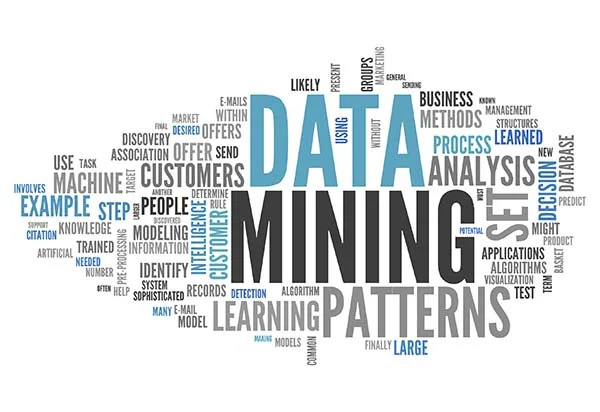Businesses need predictive vision. And, this can happen if you know the art of knowledge discovery, which is actually data mining. Before making any strategy or decision, discovering the overview of the specific aspect is a must. And, this becomes easier if you have related data. Then, you can study and decide. In the nutshell, having datasets is necessary.
Let’s find out what data mining is and how it is helpful for any business.
Introduction to Data Mining
Extracting useful information from a pool of data is data mining. Though, it sounds easy. But actually, a lot of effort, skills, and techniques are involved in it. You need data scientists, researchers, programmers, and analysts or solution architects for it. As far as techniques are concerned, having the technical expertise of statistics, machine learning, and database management will be a plus. These techniques or methods can help you to draw patterns, relationships, and trends underlying data.
All in all, if you outsource data mining, it can let you interact with such datasets that form different patterns. These patterns are tested and validated. Once validated successfully, these patterns become a learning for machines (which is also called Machine Learning). With it, machines work as a human does. ChatGPT is its perfect example. And hence, a lot of business problems are resolved this way. These problems can be accurate data entry, data conversion, extraction, customer intent discovery, etc. The beauty of this technology lies in its adaptability to every industry, like finance, healthcare, retail, utility, telecommunication, etc.
Also called Knowledge Mining, this concept is actually based on extracting knowledge or data patterns for analysis. This analysis leads to filtering useful information from the pool of records. It turns into insights when data experts put them into a proper structure to easily understand. This practice straightaway drives you to understand the voice of data patterns, which becomes knowledge discovery or knowledge extraction.
This concept is not new. It was evolved in 1989 by Gregory Piatetsky-Shapiro. With the advent of digital technologies, this concept is quickly gaining a momentum.
Because of its usefulness, this concept is popular in fraud detection and mining defaulters’ patterns. It seems like a walkover because of available details like credit cards, personal loans, and insurance. These records give a clue to foresee fraud, customers’ intent, or anything.
Main Purpose of Data Mining to Draw Insights
Typically, this process is a combination of various techniques, which are already aforesaid. These are associated with statistics, machine learning, pattern recognition, database, and data warehouses, data backups, visualisation, and more to collect more information to draw intelligence. This is how hidden patterns are filtered, which guides toward future trends, customer behaviours, and business growth.
Technically, it has a technical angle, which ensures seeing various records from different perspectives to discover meaningful information. Mainly, it is applicable to various data types, which can be data warehouses, transactional databases, relational databases, multimedia databases, spatial databases, time-series databases, World Wide Web (WWW).
The Process
This concept becomes a process when various subset processes get involved. It is also known as Extract, Transform, Load (ETL) process. Let’s find out the three main stages involved in it.
- Data Pre-processing – This phase is dedicated to preparing data for collection and cleaning, which covers integration and transformation of that data. In simpler terms, it involves data collection, cleaning, integration, selection, and transformation.
- Data Extraction – This step or stage moves around extracting desirable information from various online or offline sources. This is one of the most complex subsets because you need data scientists or programmers to script and get data from requested sources. These sources can be websites, PDFs, or whatsoever.
- Data Evaluation and Presentation – This is the last stage wherein cleansing and processing take place. These two processes pass through various hurdles like removing typos, doing data enrichment, aggregation, normalisation, etc. so that the data can be understandable. This is how analysts comprehend ad analyse.
Applications of Data Mining
- Financial Analysis
- Biological Analysis
- Scientific Analysis
- Intrusion Detection
- Fraud Detection
- Research Analysis
Benefits of Data Mining
This art of knowledge discovery is actually precious. Many businesses are leveraging it to solve various business problems. These are mainly concerned with tapping undiscovered patterns that are vital. They prove a milestone in achieving a specific business goal, like improving production or sales or satisfying customers.
- Better and Feasible Decision Making
Since the beginning of this article, our focus is on explaining how data miners helps in solving business problems or improving it. This is actually the significance of valuable insights, which helps strategists to come across facts and think beyond limits. The discovered data patterns direct to think accurately and make feasible plans accordingly.
- Increase efficiency
Every business wants to see its efficiency level going up and up. With discovered performance patterns, the downsides come into limelight. It can be lacking skills, inadequate utilities or resources, overburdening limited resources, etc. Once the efficiency and KRA data are processed, increasing efficiency becomes a cakewalk.
- Enhance competitiveness
Integrating cutting edge skills or technologies can show a business the way to growth. What if this integration won’t do anything good? To come out this problem, competitor-based data processing can help in leading the competition. Their downside can be tapped, and your own upsides can be enhanced to such an extent that many of the customers prefer you over competitors. This how opportunities can come to you effortlessly.
- Improved customer service
With the history of customers’ purchases, cart, and their web experiences, you can tailor products/services/ offers, or even recommend them to buy or invest in your offerings.
- Fraud detection
This has already been explained above. Fraud activities are detectable if you manage to collect credit card, debit card, and loan based data of customers. This process can let you identify defaults or defaulters by scanning unusual patterns and anomalies.
- Predictive analysis
Predictive models are related to foreseeing future events and trends. Tapping past events or trends can show you the way to make proactive decisions.
- New product development
You can discover new products by understanding the need or customer intent. Discover purchase patterns and preferences via their search and cart history.
- Risk management
Managing risks seem no big deal if you have data related to customer behaviour, market conditions, and other important factors.
Real-life examples of Data Mining
- Artificial Neural Network
ChatGPT is a famous example of data mining. It’s an advanced neural network that is man-made. Its system provides answers and diverse information in a comprehensive language. The AI that is working behind it is powered by programs and endless amount of text data. These datasets help it to sense the context and relevancy to respond as a human does.
- Fraud Detection
Since on-call frauds are on the rise, we can integrate data mining concept to analyse fraudulent activities. It can let you discover suspicious calls made on clone phones. Likewise, banks can compare the purchases via credit card and other sources. The purchase patterns can help you find dissimilarities in no time.
Summary
Data mining is a complete process involving pre-processing, extraction, and transformation of data to form intelligence. It is analysed to see how effective results the business has received. This can happen by using successful applications, which are for business intelligence, web search, bioinformatics, health informatics, finance, digital libraries, and digital governments, to benefit business with its predictive solutions.





